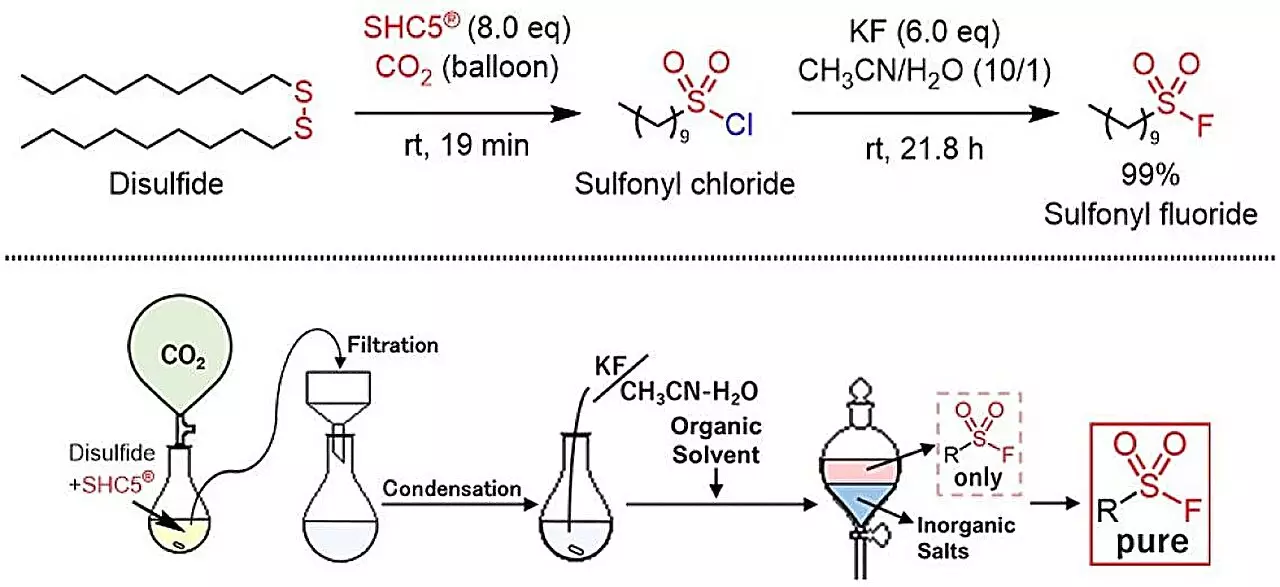The realm of click chemistry has historically been synonymous with efficient, reliable methods of constructing molecules with minimal waste. Recent developments in this area have pushed boundaries further, particularly with the introduction of a groundbreaking method for synthesizing sulfonyl fluorides. This latest advancement, reported in the prestigious journal *ACS Sustainable Chemistry & Engineering*, utilizes SHC5 and potassium fluoride (KF) to transform thiols and disulfides into sulfonyl fluorides. The process not only achieves high efficacy but also minimizes environmental consequences, making it a potential game-changer in both laboratory and industrial applications.
Historically, synthesizing sulfonyl fluorides often necessitated the deployment of hazardous materials like SO2F2 gas or KHF2. These substances are not only toxic but also present significant challenges regarding handling and safety. The need for safer and more sustainable methods has driven research into alternative synthetic pathways. The toxic byproducts generated by traditional methods have raised concerns among chemists, prompting a collaborative response to innovate greener alternatives in chemical synthesis, especially as these methods are critical across various sectors including pharmaceuticals and materials science.
A Breakthrough in Sustainable Chemistry
The recent study introduces a novel approach that combines the advantages of click chemistry with green chemistry principles. By utilizing SHC5, a relatively stable and manageable reagent, alongside potassium fluoride, chemists successfully synthesized sulfonyl fluorides while generating only benign byproducts: sodium chloride and potassium chloride. This streamlined reaction exemplifies an environmentally-conscious strategy that not only enhances efficiency but also prioritizes safety in synthetic procedures, thereby aligning with global sustainability goals. The produced sulfonyl fluorides can be tailored to include a wide variety of functional groups, broadening their utility in multiple applications.
The implications of this research extend beyond mere academic interest; they position this methodology as a leading contender for industrial applications. Given that the generated byproducts are non-toxic salts, the environmental footprint of producing these essential compounds becomes significantly reduced. This is crucial as industries strive to adopt greener manufacturing practices. This innovative synthetic pathway may soon become foundational in the design and production of new pharmaceuticals and materials, reflecting a sea change in how the chemical industry approaches production.
Looking Ahead: A Sustainable Future
As Masayuki Kirihara, Shinobu Takizawa, and Mohamed S. H. Salem point out, advancing organic synthetic protocols for the fabrication of valuable compounds is critical in achieving the Sustainable Development Goals (SDGs). Current ecological challenges underline the importance of developing methods that effectively consider environmental impacts. The successful implementation of this new synthesis method not only represents a significant achievement in green chemistry but also serves as a model for future applications in the field, paving the way for safer, more sustainable chemical processes. This evolution in synthetic chemistry underscores an important shift towards balancing practical applications with the imperatives of environmental stewardship.


Leave a Reply